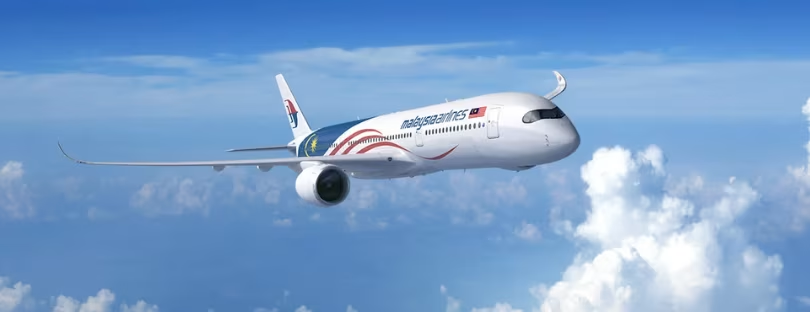
Countries with the Most Traffic Cameras: A Traveler’s Guide to Staying Ticket-Free
We’ve all been there: cruising down a sunny highway, music pumping, foot hovering a little too close to the gas pedal. Suddenly, a flash in the rearview mirror jolts you back to reality. A red-light camera, or perhaps a sneaky speed trap, has caught you red-handed (or should we say, red-footed?). Traffic camera international travel
Traffic enforcement cameras have become a ubiquitous presence on our roads. While they might not exactly be popular with drivers who enjoy pushing the limits, there’s no denying their effectiveness in curbing reckless behavior. But are these watchful eyes simply a method of revenue collection, or do they play a crucial role in keeping our roads safe? Let’s buckle up and take a deep dive into the world of traffic cameras.
A Global Network of watchful eyes:
Imagine a giant game of “Where’s Waldo?” but instead of searching for a stripy-shirted wanderer, you’re trying to spot a tiny camera nestled amongst traffic lights and highway signs. A recent study by DiscoverCars.com shows Brazil takes the gold medal in this global game, boasting over 15,000 traffic enforcement cameras. That’s a staggering number, and it’s a clear indication of the country’s commitment to road safety. But Brazil isn’t alone. Countries like Austria, Argentina, and Belgium follow closely behind, with thousands of cameras keeping a watchful eye on their roadways.
Why Cameras?
So, why the sudden surge in camera use? Traffic congestion and accidents are a growing concern in many parts of the world. Speeding drivers and those who disregard red lights are a major contributing factor to these issues. Traffic cameras act as a digital deterrent, reminding drivers to slow down and obey traffic laws. Studies have consistently shown that cameras lead to a reduction in crashes, injuries, and fatalities. A Cochrane review, which gathered together data from studies around the world, found that speed cameras reduce the number of crashes that cause fatal and serious injuries by 11% to 44%. These devices play a valuable role in keeping all road users safe. In essence, they take the human element of error out of the equation, creating a more predictable and safe driving environment. Traffic camera international travel
Traffic Cameras Around the World: A Country-by-Country Breakdown
- Brazil: Holds the crown for most traffic cameras (over 15,000) – a mix of red light and speed cameras. These cameras enhance safety in both cities and on potentially hazardous, unpaved rural roads.
- Italy: Secures second place with over 10,000 cameras, with speeding fines starting at a minimum of $37 (€35) and rising for exceeding the limit by larger margins. Points can also be accumulated, potentially leading to driving bans for foreign visitors.
- United States: Ranks third with nearly 8,000 cameras. Speed limits vary significantly by state, with Texas boasting the highest (up to 137 km/h) and Washington, D.C. having the lowest (89 km/h).
- United Kingdom: Occupies fourth place with almost 5,000 cameras. Speeding is a common offense, with higher penalties on freeways due to increased speeds.
- Germany: Sits in fifth with over 4,000 cameras, with speed cameras heavily outnumbering red light ones. Only 30% of German Autobahns have speed limits, but a recommended maximum of 130 km/h applies to those without. Strict speeding laws exist, especially for trucks exceeding the limit by significant margins.
- France: Lands in sixth with nearly 4,000 cameras, dominated by speed cameras. Unlike some countries, French speed limits adjust based on weather conditions, dropping to 50 km/h in fog for improved visibility. Using speed camera detectors is illegal.
- United Arab Emirates: Grabs seventh with over 2,500 cameras. This nation boasts some of the world’s highest speed limits (up to 160 km/h on specific highways), but much lower limits apply in residential areas. Rural roads pose unique challenges with camels and goats potentially causing drivers to slow down.
- Sweden: Takes eighth with nearly 2,500 cameras, focusing solely on speed enforcement. Interestingly, a past initiative offered drivers a chance to win prize money from speeding fines if they obeyed the speed limit!
- Spain: Ranks ninth with almost 2,000 cameras, with more dedicated to speed monitoring. This country employs a unique system where some traffic lights can detect speeding drivers and change to yellow and then red without issuing a fine, promoting slower speeds. Regular speeding fines also exist.
- Turkey: Rounds out the top ten with nearly 1,500 cameras, primarily focused on speed enforcement. Specific fines apply for running red lights and exceeding the speed limit, particularly by more than 50%. Recently, some Turkish highways have seen speed limit increases to 130 km/h or even 140 km/h, the highest in the country.
But are they Revenue Machines in Disguise?
Opponents of traffic cameras often argue that they’re simply a way for governments to generate revenue through fines. There’s some truth to this. The hefty fines associated with traffic violations can be a significant source of income for municipalities. However, it’s important to remember that the true purpose of these cameras is to deter dangerous driving, not to fill government coffers. Ideally, the revenue generated from fines would be reinvested in road safety initiatives, further improving the overall driving experience. Traffic camera locations for international travel
Beyond the Ticket: The Positive Impact of Cameras
The benefits of traffic cameras extend far beyond simply issuing tickets. Here are some additional ways they contribute to a safer driving experience:
- Increased Driver Awareness: The presence of cameras serves as a constant reminder to drivers to obey the rules of the road. Even if you’re not caught speeding this time, you’re more likely to think twice about doing it again if you know a camera is watching.
- Improved Data Collection: Traffic cameras can provide valuable data on traffic patterns and accident hotspots. This data can be used by traffic authorities to identify areas that need improvement, such as increased signage or changes in road design.
- Reduced Aggressive Driving: Knowing they might be caught on camera can discourage drivers from engaging in aggressive behaviors like tailgating, weaving through traffic, or running red lights.
Cameras and the Future of Road Safety
As technology continues to evolve, we can expect to see even more sophisticated traffic camera systems emerge. Artificial intelligence (AI) is already being used to develop cameras that can detect a wider range of offenses, such as distracted driving or using a mobile phone behind the wheel. These advancements have the potential to make our roads even safer in the years to come.
So, are Traffic Cameras Friend or Foe?
The answer, like most things in life, is not a simple one. Traffic cameras can be a powerful tool for promoting road safety. However, it’s important to ensure that they are used fairly and transparently. Clear signage and public education campaigns can help to ensure that drivers understand the role of cameras and the importance of safe driving practices.
Ultimately, the goal is not to create a society of drivers constantly looking over their shoulders but to foster a culture of safe and responsible driving. Traffic cameras can play a valuable role in achieving this goal, but they are just one piece of the puzzle. By combining camera enforcement with driver education and infrastructure improvements, we can create a future where our roads are safer for everyone.










